You’ve seen it before. Two guys get into an argument on the Internet. The insults flow. Real enmity develops and threats are made. Eventually, one of them challenges the other one to fight him. Almost never does the fight actually happen; one party or both parties make excuses, perhaps eager to make it look like they want to fight without actually doing it.
I’ve seen this happen in real life in a crowded parking lot. When the driver of a pickup truck came too close to a pedestrian, the pedestrian slapped the side of the truck. The truck lurched to a stop and the driver got out to confront the pedestrian. The pair shouted and postured, but it became clear that neither man actually wanted to fight. Both men wanted to make it seem like they would fight so the other guy would back down.
This behavior has been common in the martial arts and self-defense discussion communities online for as long as those communities have existed — and it predates the Internet by a considerable margin. The practice of “dojo storming,” in which a martial artist enters another’s school and makes a fight challenge, has a long history. Challenge matches among rival martial artists also have a long history, which can probably be traced to the practice of dueling among civilians in centuries past. The infamous story of Bruce Lee fighting another Kung Fu instructor, supposedly for the “right” to teach non-Chinese students, lies at the heart of the most recent Bruce Lee film to hit Hollywood… but with rare exceptions, challenge matches have become a thing of the past.
Or have they?
You might be surprised to learn that even now there exists a thriving culture of fight challenges, amateur mixed martial arts, “tough man” -type fighting competitions, and backyard brawls in the United States. One such organization is Streetbeefs, which broadcasts its amateur bouts on social media and which boasts a YouTube channel with tens of thousands of subscribers. Streetbeefs is the creation of 39-year-old Christopher “Scarface” Wilmore of Harrisonburg, VA.

Wilmore (whose nickname stems from burn scars he bears) is a married father of 3 who makes his living as a personal trainer, life coach, and “wellness manager.” He started Streetbeefs in 2008 after what he calls a “beef” with mutual neighborhood friends over a drug debt.
“The concept wasn’t really a concept then,” he explains. “More of a loose idea.” After one of his close friends was murdered over what he calls a petty squabble, however, Wilmore chose to step up his efforts.
Since he actively began promoting Streetbeefs as a means for aggrieved parties to settle their arguments by fighting in a controlled, one-on-one, videotaped environment (the outdoor ring that he calls “Satan’s Backyard”), he estimates the organization has overseen 300 fights in total. Some are no longer on social media because he judged the video quality too poor. While he shoots in clear HD now, some of the original fights were shot on flip-phones. “Our social media accounts are fairly popular, mainly YouTube,” he acknowledges.
Wilmore says he considers himself a fighter in his own right, although as he gets older he does not quite have the ability he once did. “I boxed at a boxing academy for several years and did fairly well,” he says. “I’ve fought in our yard 7 times, most of them over beefs. A few were just friendly sporting matches, though.”
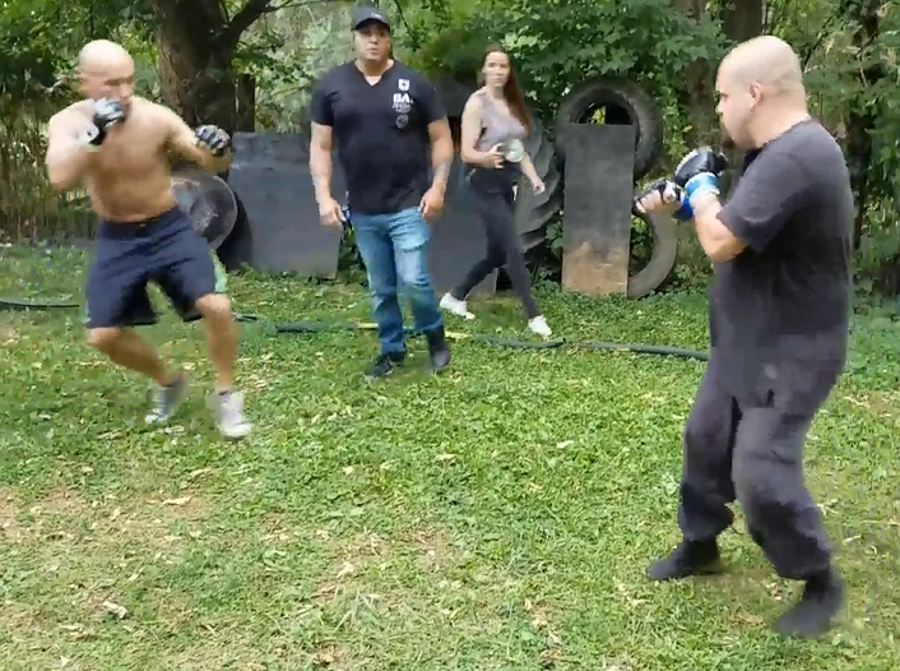
One of Wilmore’s most recent Streetbeefs bouts was an Internet challenge fight that garnered quite a bit of attention. It was between Ronald Collins, Jr. — a self-described fifth dan in ninjitsu who has been a fixture in martial arts discussion groups online for nearly two decades — and an unknown personal trainer and kickboxer named “Icy Mike” Pesesko. Pesesko, a former law enforcement officer who teaches self-defense at his Myrtle Beach-based RKM Training, says that he was drunk when he challenged Collins to a fight at a mixed martial arts discussion forum where both were participating. After weeks of pre-fight discussion and much speculation about whether both parties would show for the match, they both did. The fight, as of this writing, appears on Streetbeefs’ YouTube channel.
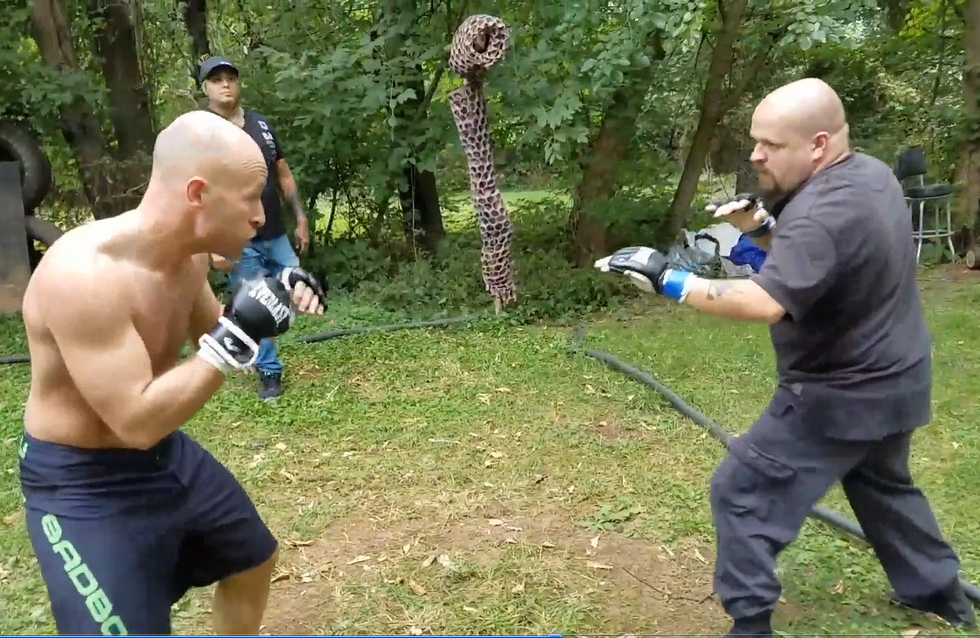
The fight was notable for a couple of reasons, first and foremost that Collins and Pesesko had no personal history. Also a point of discussion was the fact that Collins, after being arrested in 2013 for making “terroristic threats,” was committed for six months to a mental hospital in West Virginia.
Pesesko recieved no small amount of criticism both before and after the fight for agreeing to a match — as a trained kickboxer — with someone whose training was thought to be substandard before the fight. After the fight, the consensus was that Collins had little to no training at all, raising the question of whether Pesesko had agreed to fight someone who was essentially unable, psychologically or physically, to defend himself.
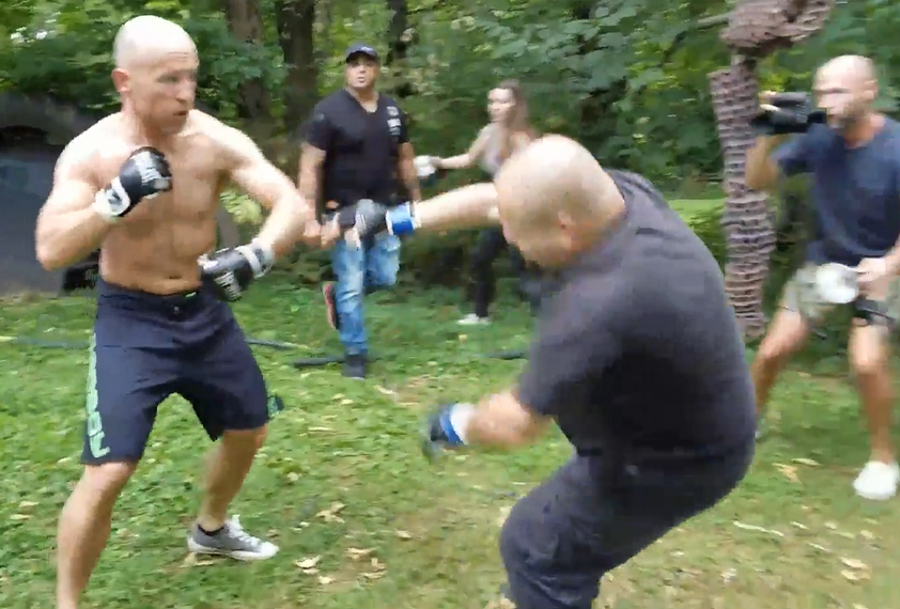
While Collins and Pesesko are within the same age range and roughly the same height (while Collins was considerably heavier), the “fight” was a relatively tame example of a fighter taking his opponent “to school.” Collins at no time landed a single strike. He attempted once to shoot for a takedown, which Pesesko easily stuffed.
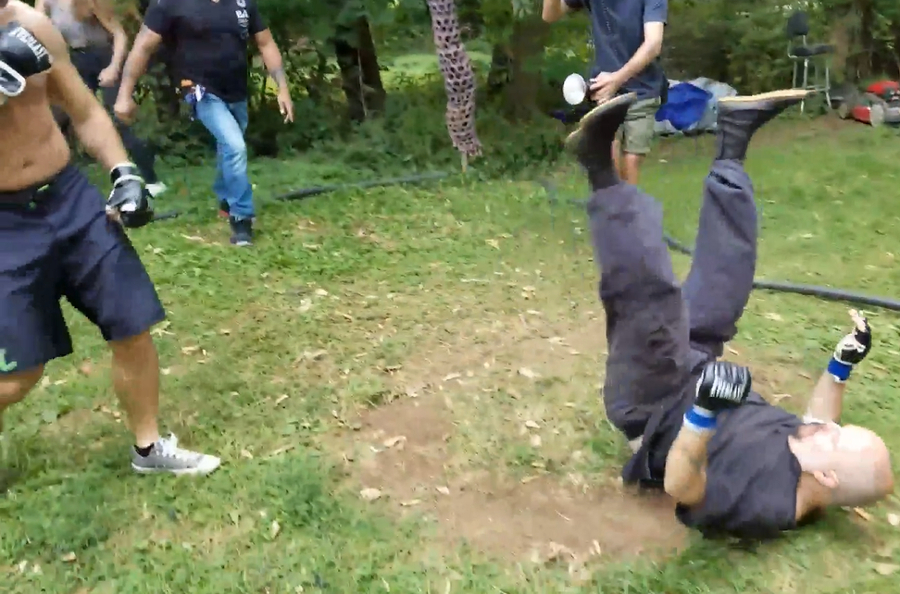
Pesesko hit Collins with a left hook that dumped Collins on his back with his legs in the air. He ended the fight with a body shot that left Collins struggling to breathe. After 40 seconds, the “fight” was over.
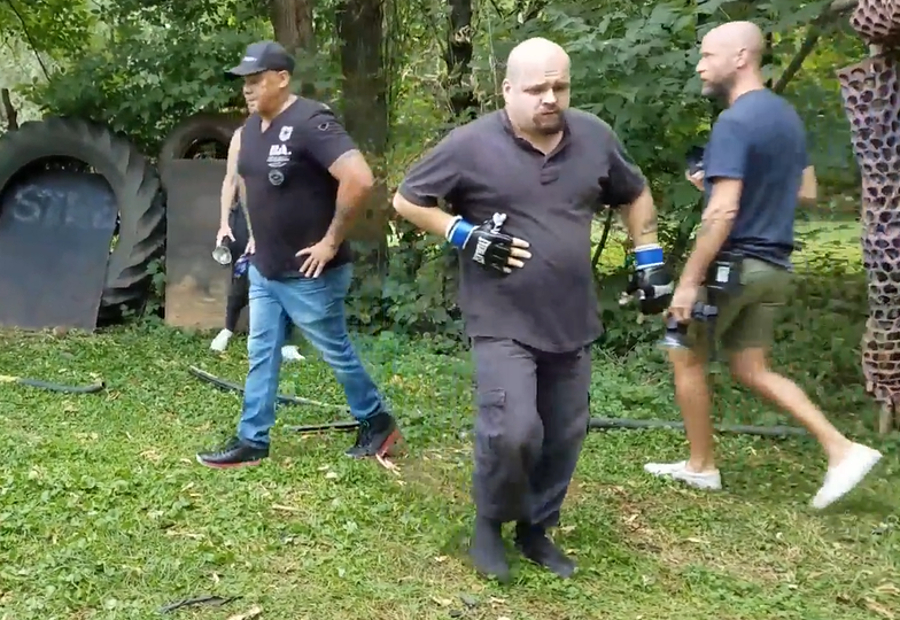
In a YouTube video posted the day after the fight on 27 August, Pesesko said, “There’s people out there who view this as some sort of victory, or vindication, or validation… That this is some sort of notch in their belt. It’s not. It’s not a victory for you. It’s not validation for you. You didn’t do anything. Ron did. Ron stepped up and fought. …Imagine being in Ron’s shoes, being in Ron’s tabi boots, and standing there, taking his lumps like a man. My hat’s off to him. I don’t see how anyone else can claim this as a victory for them, or as some proof that oh, they’ve been right all along. You didn’t do anything. Ron did.”
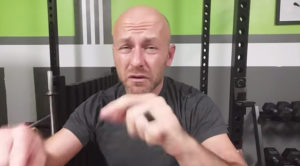
“Most of you keyboard warriors,” Pesesko went on, “I’d just wager that most of you, not all… Most of you couldn’t take that shot and stay on your feet. Most of you guys out there saying that Ron is all this and all that couldn’t take that shot and stay on your feet, let alone stand up straight and try to keep a straight face. …If you want to jump on somebody and you want to talk some shit, I’m always game… I might be a mediocre fighter, but I’m a black belt in shit talk.”
Questions remained after the fight: Was the challenge ethical? Was it moral for a trained fighter to beat up a man who clearly was not prepared for the fight… but who actively wanted to engage in that activity? Wilmore, in a video on his Streetbeefs Facebook group, explained why he subsequently banned Ron Collins from the organization’s social media following an incident in which Collins argued with another challenger.
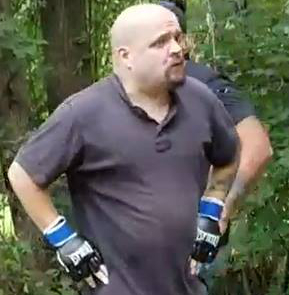
“It is obvious to me that the ass-whupping that Icy Mike [Pesesko] put on him… taught him nothing. …It’s too much with that dude. He had to go. …A good ass-whupping should humble anybody. I don’t know too many people who get their ass beat, and get beat in the way that he did, and are comfortable just talking shit normally three days later. That’s just not the signs of a normal human being. What should have happened is, the fight with Icy Mike should have showed him he’s not a fighter in any way, shape, or form. …He fought a dude that was smaller than him… didn’t land a shot… and was dropped twice, basically, within a 40 second period. There just was no excuse and definitely no reason for him to turn around a couple days later and be talking…”
Wilmore, in an interview with The Martialist, explained that the “Icy Mike versus Ninja Ron dispute” was a very rare case. “In nearly 300 fights I’ve never met an individual quite like Ron [Collins],” he says. “He had an almost delusional idea of his abilities, and in this case I don’t feel the fight made things better or worse, because Ron has been doing what he does — antagonizing the martial arts community — for years before we came into play. He’ll probably continue to do so for years after.”
The fight did teach Wilmore and his organization a lesson, he says. “We will do a more thorough job investigating the background of anyone from the Internet who wants to fight. Locally, I know who I’m dealing with. I know the details. But online, things can be more murky. I’m going to do more fact checking into internet disputes from here on.”
An interesting feature of the bout, however, was the mercy Pesesko showed his opponent, allowing Ron to regain his feet after being knocked down (and arguably going easy on Collins overall). Neither fighter was seriously injured, something that Wilmore says is the norm for Streetbeefs fights.
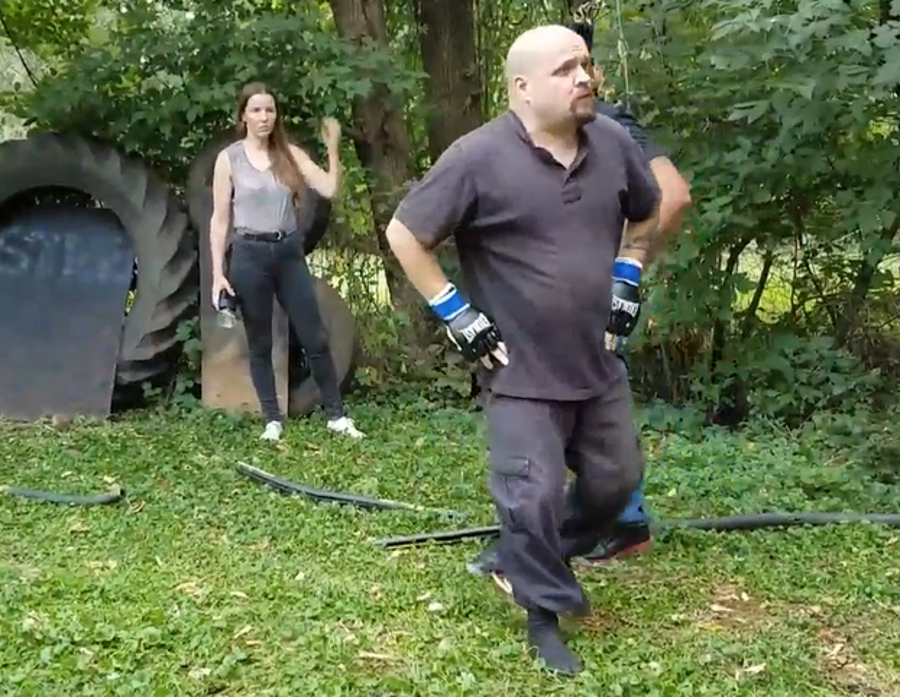
“No one has ever been seriously hurt,” he says, “meaning no one’s had life-threatening injuries. We take precautions. I have a person on standby who is certified in first aid and CPR. Our rules are constantly revamped with the safety of the fighter in mind. We want these people to solve a dispute, not suffer life-altering injuries. In fact, our YouTube viewers complain we’re getting ‘too soft’ due to our added precautions.”
Perhaps surprisingly, Wilmore’s organization appears to to be completely legal. “Legally we are 100% okay,” he says. “We do not get hassled by law enforcement unless the neighbors complain about the noise. Lately we’ve had some efforts by a crooked politician to harass us, but she failed, and we’re moving on fine.”
Social media, however, is another matter. YouTube has demonetized Wilmore’s channel, meaning he cannot make any money off ad revenue for YouTube videos (which was never, he says, a major concern. This is because his videos are considered by YouTube to be “violent content” — a fact he considers strange given that the Ultimate Fighting Championship, another legitimate fighting organization, seemingly profits from its own YouTube videos. “At least, to my knowledge they do,” he adds.
While the concept of “settling a beef” through a fight makes sense on its face, it does raise the question of whether Streetbeefs and other challenge matches might make things worse. A fighter who loses doesn’t just lose; his defeat is broadcast online and could become fodder to mock or humiliate him. Whether that might escalate a conflict between the combatants is the natural question to ask.
“I have on three occasions seen a beef fight make things ‘worse’ initially,” Wilmore says. “In those instances, the people antagonized each other about the fight and things began to escalate. However, at Streetbeefs we don’t just let them fight and wave good-bye. I monitor the beef for several weeks after if they’re local, and if it seems to be escalating, I reach out to both to attempt to mediate. I was able to completely help one of those three. The other two disputes… those people still seriously dislike each other, although over the course of two years, nothing major has happened as a result of their dispute.”
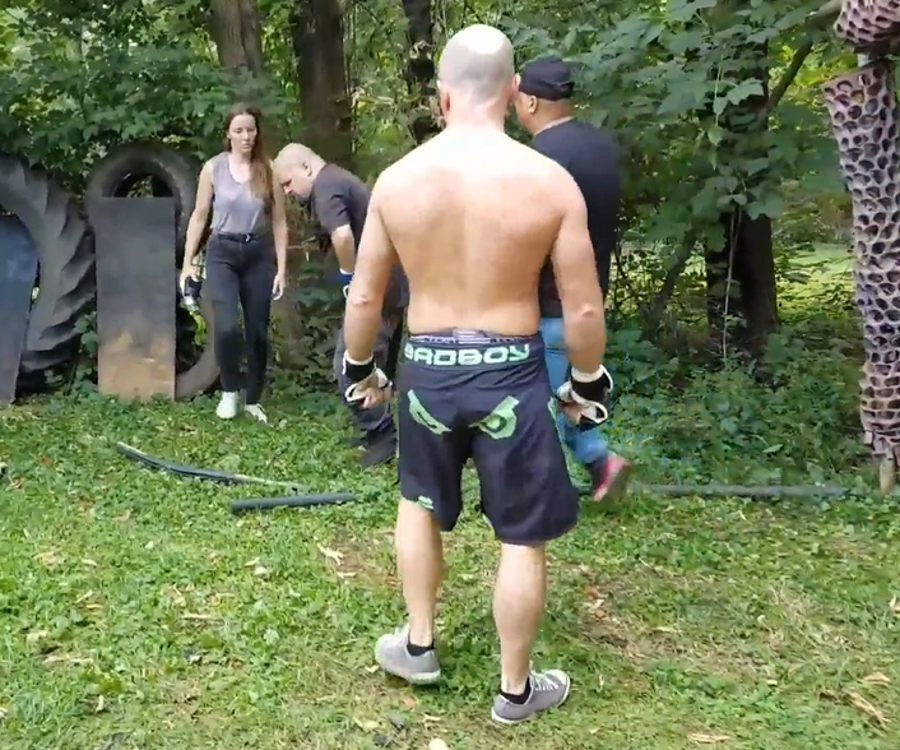
Wilmore says he always worries that a participant won’t handle a loss well, which is why he conducts his bouts in a very specific way in hopes of preventing that from happening. “I make myself available after the fight to help curb future issues,” he says. “The positives Streetbeefs offers are many, believe it or not. Many young men take pride in knowing they showed up after giving their word, fought hard — win or lose — and didn’t pull a weapon or have a street fight. And often times, the combatants see the experience as something they both went through together, so it breaks the ice and leaves things a little more open to friendliness.”
In coming years, Wilmore hopes to spread what he calls the Streetbeefs philosophy. “We honestly want to affect culture. This stupid culture of men thinking it’s okay to murder over a petty dispute, or for five to six people to jump one person in a street fight, is cowardly. It’s the result of no code of ethics. We’re trying to change the code of ethics for street fights. …Streetbeefs was intended for people with serious street disputes, where a gun, knife, or gang of friends may come into play. It’s intended to give people a safe alternative to solve their dispute. We want to send the message that if you must get physical, let’s do a modern-day duel with fists. A black eye beats a bullet wound every time.”
Anytime y’all come to Sc Greenville or Spartanburg I’m ready 6’4 375 is ready! “The Bull”
what do i need to qualify to fight? i live in harrisburg pa and would like to participate in a fight or 2. Im 55 years old 6 foot 280 lbs